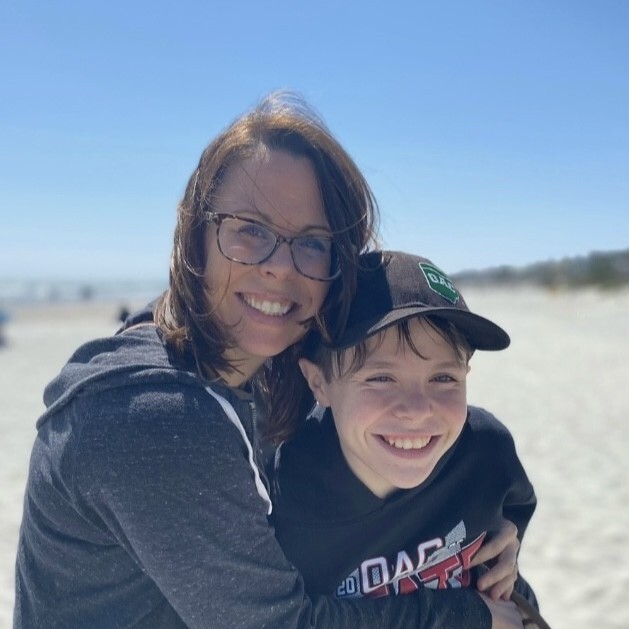Service Learning: Cultivating Personalized Experiences that Lead to Social Responsibility and Student Engagement
Topics
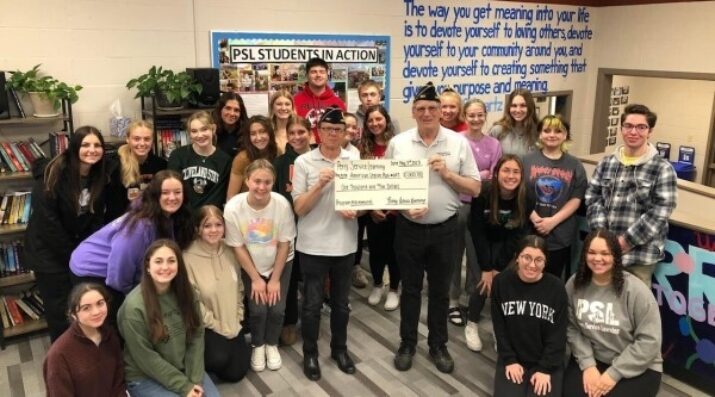
We’ve all had the experience of truly purposeful, authentic learning and know how valuable it is. Educators are taking the best of what we know about learning, student support, effective instruction, and interpersonal skill-building to completely reimagine schools so that students experience that kind of purposeful learning all day, every day.
Bringing personalized learning and service learning together can empower students to apply their knowledge and skills as active, thoughtful, and engaged citizens of the global community.
As more schools embrace personalized learning, it is important to not only help students develop skills that will make them successful as individuals but also cultivate experiences that encourage and inspire them to be active in our global community. In my experience with teaching through service learning, I have found that it is uniquely suited to meet both of those demands because the rich experiences students engage in while serving others is grounded in curriculum and instruction that connects academic outcomes with these real world experiences. This personalized learning approach empowers students to apply their knowledge in deeply meaningful ways, and prepares them to be thoughtful, engaged citizens of a world that needs them now more than ever.
An Unclear Definition of Service Learning
If I’m completely honest, I struggle to effectively define service learning—what makes it unique from other ways to learn. I know it includes some educational buzzwords like authentic experiences and civic engagement, and requires students to do something beyond reading a book and writing a paper. I know that it may make some administrators a bit nervous, because it sometimes requires students to leave the building and to connect with people we might otherwise tell them to never, ever talk to. And I know, from a little bit of trial and error, that it challenges students to examine what they think they know and to find a personalized pathway to engage in our community.
Stages of Service Learning
Fortunately, experts around the globe—and in my own backyard of Northeast Ohio—who have been service learning practitioners for years, offer some guiding principles that are beneficial for someone new to the practice, as well as those who have been trying to provide service learning experiences through trial and error for some time. One of those experts is Cathryn Berger Kaye. You might read her article Baker’s Dozen Guideposts to a Meaningful Service Learning Program and take a deep dive into her foundational resource The Complete Guide to Service Learning at your leisure. One of her most significant insights that I try to practice are her five stages of service learning: investigation, preparation, action, reflection, and demonstration.
Among the many schools and districts in Northeast Ohio that I look to as powerful educational models of service learning are North Olmsted High School’s SITES program, which has been a leading voice in service learning for decades, and newer, innovative educators guiding Wickliffe High School’s Learn Lead Serve program and Mayfield High School’s Mayfield Service Learning program. I think it’s also incredibly important to include Mark Soeder, my co-teacher and co-director in the Perry Service Learning program at Perry High School, in this conversation, as his vision and voice have been transformative in our region, and I learn so much from him during our co-teaching experiences and reflective conversations.
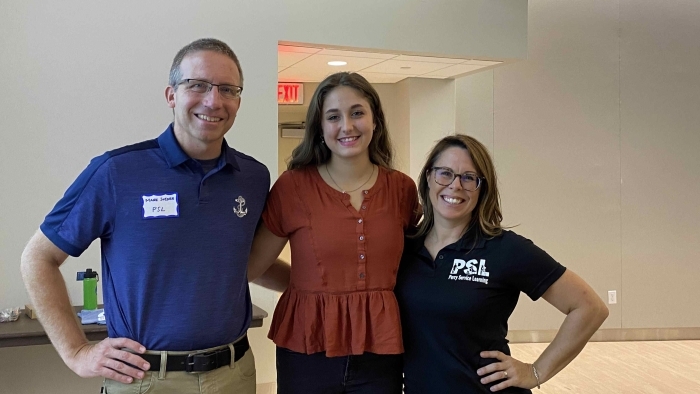
Perry Service Learning teachers Mark Soeder and Allison Trentanelli, along with PSL alumnus Ruby Tozzi '23, collaborated to develop the Northeast Ohio Youth Summit.
The stages of service learning each educator and program chooses to follow may look different than Cathryn Berger Kaye, but I’m confident their voices and experiences can inspire educators who are looking to build their own practice. My hope is that by sharing a few reflections from the Perry Service Learning program, my own definition of service learning might grow, and educators may find a way to incorporate the practice into their own classrooms during a time when we need community and collaboration more than ever.
A Personalized Service Learning Example in Addiction and Recovery
In recent years, my co-teacher and I developed a unit on addiction and recovery for our service learning class. We had lost too many graduates to substance use disorder and learned that some of our current students were grappling with addiction in their own families. They had participated in school-based drug and alcohol prevention programs, but didn’t know much beyond the “just say no” mantra. As part of our investigation and preparation stages, we brought in guest speakers who were open to sharing their experiences. One, a former student, narrated her descent into addiction, complicated recovery, and recent work as a substance abuse counselor. During this conversation, she spoke frankly about her support of harm reduction strategies, including needle exchange programs and safe usage spaces.
This conversation upended what many of us were taught about addiction and forced us all to question the complexities of this social issue. One student in particular had to sit with those complexities for a while and, as part of his reflection, tried to find a place where “just say no” and creating spaces for people to use heroin safely could coexist. I’d like to think the principles of service learning helped this student—and all of us who were part of that conversation—broaden the way we look at addiction.
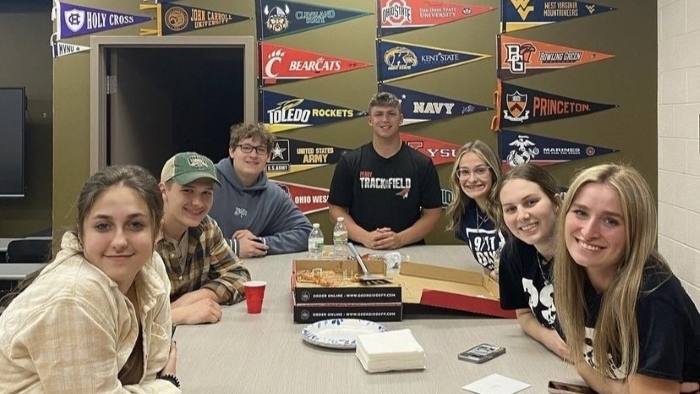
Perry Service Learning students, including two who spearheaded the Chris Herren event (see below), reflect on their experiences at an Advisory Board meeting.
The unit also challenged students to find their own personalized ways to take action. With the guidance of the Perry Service Learning program’s student advisory board, we worked to create a variety of summative activities that allowed students to choose how they want to address substance use in our school and our community. There were two students, inspired by the unit, who wanted to do even more than we offered. Compelled to act on a larger scale, they sought to broaden the conversation on addiction and recovery to include students in both our middle and high schools. Working closely with the advisor of SADD (Students Against Drunk Driving), our district’s wellness committee, and other key stakeholders, they raised the funds necessary to bring Chris Herren, a former NBA star who battled addiction, to speak to our students in grades 7-12. Herren’s powerful message, amplified by a sense of social responsibility experienced by two high school students, created space in our school for open dialogue on teen substance use. This unique combination of action, reflection, and demonstration helped remind me of the powerful impact students can have on their community when they are given the freedom to personalize their outcomes.
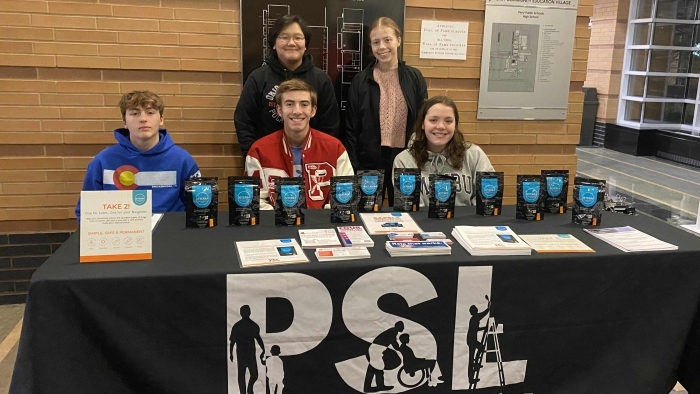
In response to reading Mindy McGinnis’ text Heroine, PSL students chose to pass out Deterra Drug Deactivation Kits at school sporting events.
A Personalized Service Learning Example in Student Philanthropy
Another unit that we have been practicing and refining for a few years is one that engages students in philanthropy. Because of the generosity of Magnified Giving, a Cincinnati-area nonprofit, our students are gifted $1,000 that they can invest in a local 501(c)3 organization. The only caveat to the money is that it cannot be divided. Students must work together to research potential organizations and democratically choose a single nonprofit who will receive the entire sum. Each student nominates one organization, and through an academic process that includes research, tax document analysis, conference calls, and site visits, all participants must work collaboratively to select the winner.
While this unit most definitely incorporates all of Cathryn Berger Kaye’s stages of service learning, it was a moment of reflection and demonstration that stopped me in my tracks. The students narrowed down the nonprofits to three finalists. The nominating students were asked to tell a story and share why their nonprofit should win. The student who nominated Crossroads, which provides mental health counseling to youth and adolescents, quietly addressed his classmates and shared that he would not be alive had it not been for supportive services provided by Crossroads.
His internal reflection manifested in a public demonstration that fully unscored how personalized service learning opportunities can connect the individual and the broader community. This student’s experience came full circle because of service learning—he was able to invest tangible resources in a non-profit that gave him an intangible gift, which in turn became an experience for all of us in that presentation space. I could repeat this story with different students and different nonprofits—the time a student nominated the American Cancer Society after she felt supported during her father’s terminal illness, another time when a student advocated for the ALS Society in memory of a beloved teacher who was diagnosed with the disease—but the underlying message is the same. When students use their personal experiences combined with intentional learning opportunities to be agents for social change, the experience can be transformative for both students and educators.
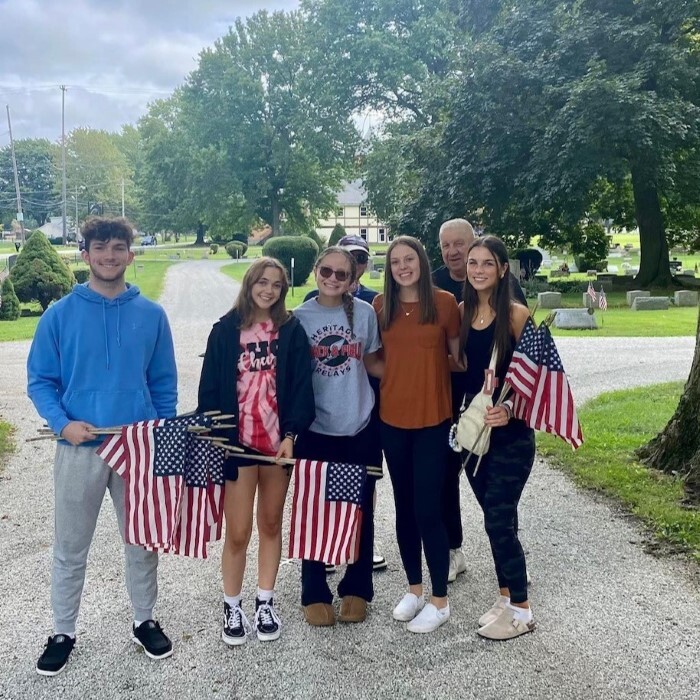
Early in the course, Perry Service Learning students participated in a number of Day of Service activities, including a collaboration with veterans from the American Legion to honor those buried at our local cemetery.
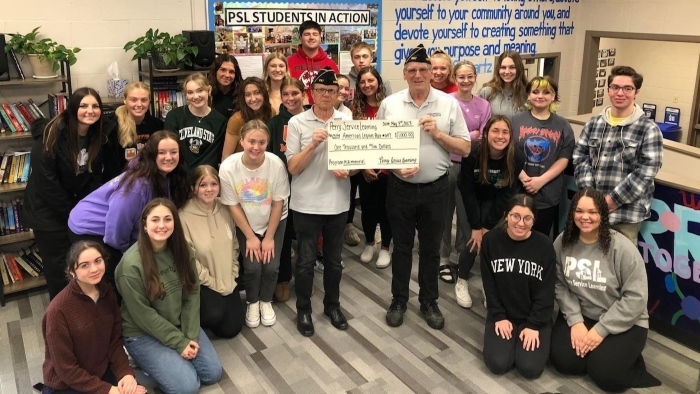
Inspired by this connection, students later chose to donate $1,000 to the American Legion's MIA Memorial campaign.
A Still Unclear Definition of Service Learning
Even after this reflection, I’m still struggling with that formal definition of service learning. There are pieces that are becoming a bit more clear, especially when grounded in the framework of investigation, preparation, action, reflection, and demonstration. But I know that, when put into practice, service learning challenges students to look carefully at the world around them and to find meaningful ways to affect change. It can also inspire educators to refine their practice so that students cultivate critical skills in ways that benefit the broader community.
Helpful Service Learning Resources
InnerView - Looking for an effective way to capture service hours and publicly reflect on personal service experiences? InnerView has been an incredible (and free) resource.
Magnified Giving - At the heart of their mission is their belief that anyone can be a philanthropist, not just the older and the wealthy. They believe that philanthropy is using time, talent, and treasure to serve others at any age. They focus on educating children and teens about philanthropy to ensure they see their potential to bring about change.
Northeast Ohio Youth Summit - We are still putting together the 2024 experience, but would love to include additional educators from our region and their students. Reach out to trentanellia@perry-lake.org for more information.
Perry Service Learning Program - Have some grace with this source, as it is a continual work in progress. We are always happy to share resources with educators interested in service learning.
ServeOhio - Ohio’s Commission on Service and Volunteerism empowers local communities with volunteer resources to build a stronger Ohio.
Youth Service America - YSA is a leading global nonprofit that activates young people, ages 5-25, to find their voice, take action, and acquire powerful civic and 21st Century skills as they solve problems facing their communities. YSA supports its campaigns with grants, training and resources, and recognition programs for young people and their adult champions.
More Service Learning on the Blog
Engagement, Empathy, and Empowerment for Service - From NGLC's Practitioner's Guide to Next Gen Learning, this article explores how learners at Sunset Middle School in Longmont, Colorado, develop real-world skills and global mindsets through service projects and includes additional resources for educators.
All photos courtesy of the author. Photo at top: Following a collaboration with veterans from the American Legion to honor those buried at their local cemetery, students chose to donate $1,000 to the American Legion's MIA Memorial campaign.

